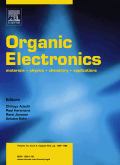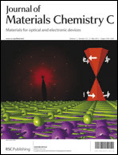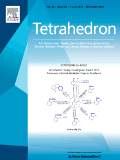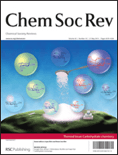
Aggregate
metrics 2024
Pioneering the future of chemistry and materials science.
Introduction
Aggregate, published by WILEY, is a premier open-access journal established in 2020, dedicated to advancing the fields of Chemistry, Materials Chemistry, Materials Science, and Molecular Biology. Based in the United States, this rapidly rising journal (Q1 in various categories as of 2023) has quickly made its mark as a valuable resource, evidenced by its impressive Scopus rankings—ranking #6 in Chemistry (miscellaneous) and #13 in Materials Science (miscellaneous) among others—place it firmly in the top percentiles of these disciplines. With an emphasis on rigorous peer-reviewed research, Aggregate provides an essential platform for researchers to disseminate groundbreaking findings and innovative methodologies that propel the scientific community forward. As an open-access journal, it ensures that cutting-edge research is accessible to a global audience, thereby enriching the dialogue among professionals, researchers, and students alike. Explore the latest advancements and contribute to the vibrant discourse in these critical areas of science by publishing with Aggregate.
Metrics 2024
 -
- 13.90
13.90 14.90
14.90 -
-Metrics History
Rank 2024
IF (Web Of Science)
JCI (Web Of Science)
Quartile History
Similar Journals

Cell Reports Physical Science
Connecting Ideas Across Chemistry, Physics, and EngineeringCell Reports Physical Science is a leading open-access journal published by Cell Press, based in the United States, that has quickly established itself as a pivotal platform for the dissemination of research in diverse scientific fields. Launched in 2020, this journal focuses on advancing knowledge in areas such as Chemistry, Energy, Engineering, Materials Science, and Physics and Astronomy. With an impressive impact factor, it is ranked Q1 across all major categories, demonstrating its high relevance and influence in the academic community. Notably, it enjoys a remarkable reputation, reflected in its Scopus rankings, positioning it within the top tiers of its respective fields. As an open-access journal, Cell Reports Physical Science ensures that research is freely accessible, promoting collaboration and innovation globally. Researchers, professionals, and students are encouraged to submit their groundbreaking work to contribute to the ever-evolving conversation in physical sciences.

JOURNAL OF FLUORESCENCE
Advancing the Frontiers of Fluorescence ScienceJournal of Fluorescence, published by Springer/Plenum Publishers, is a pivotal interdisciplinary journal focusing on the application and innovation of fluorescence methodology across various scientific domains. With an ISSN of 1053-0509 and an E-ISSN of 1573-4994, this journal facilitates the dissemination of significant research findings from 1991 to 2024. The journal has established itself as a key resource in fields such as Biochemistry, Clinical Biochemistry, and Spectroscopy, demonstrating its importance by maintaining a Q3 ranking in multiple categories in 2023, including Biochemistry and Clinical Biochemistry. While currently not offering open access, the journal's commitment to scholarly rigor is reflected in its Scopus rankings and diverse readership, making it an essential source of knowledge for researchers, professionals, and students engaged in the rapidly evolving landscape of fluorescence research.

ORGANIC ELECTRONICS
Unveiling Breakthroughs in Organic ElectronicsORGANIC ELECTRONICS, published by Elsevier, is a premier journal dedicated to the rapidly evolving field of organic electronics, encompassing a spectrum of interdisciplinary research from materials chemistry to electrical engineering. As a crucial resource for researchers, professionals, and students, the journal boasts significant impact, currently ranked in the Q2 category across multiple fields, including Condensed Matter Physics, Materials Chemistry, and Electrical and Electronic Engineering. With a commitment to advancing knowledge and innovation from its base in the Netherlands since its inception in 2000, ORGANIC ELECTRONICS not only provides critical insights into organic materials and their applications but also fosters collaboration among scientists through its comprehensive findings and high-quality articles. The journal does not currently offer open access but provides various access options for subscribers. With its HIndex signaling substantial academic output and engagement, ORGANIC ELECTRONICS remains an essential platform for groundbreaking research that is shaping the future of technology.

Journal of Materials Chemistry C
Connecting Innovators in Materials ChemistryJournal of Materials Chemistry C, published by the renowned Royal Society of Chemistry, is a leading academic journal focusing on innovative research in the field of materials chemistry. With an impressive impact factor, this journal has solidified its status as a top-tier publication within its field, ranking in the Q1 category for both Chemistry (miscellaneous) and Materials Chemistry as of 2023. Positioned at the forefront of -materials science, it serves as a vital platform for researchers, professionals, and students to disseminate findings that highlight the synthesis, characterization, and application of advanced materials. The journal's open access model allows for broader readership and engagement, ensuring that groundbreaking research is accessible to a global audience. As a result, the Journal of Materials Chemistry C plays a crucial role in advancing the understanding and technology of materials, fostering collaboration and innovation within this dynamic scientific community.

JOURNAL OF STRUCTURAL CHEMISTRY
Pioneering Research in Theoretical and Physical ChemistryThe JOURNAL OF STRUCTURAL CHEMISTRY, published by PLEIADES PUBLISHING INC, is a premier resource in the fields of Inorganic Chemistry, Materials Chemistry, and Physical and Theoretical Chemistry. Established in 1960, this journal has been providing a platform for groundbreaking research, facilitating the advancement of knowledge and innovation up to the year 2024. With an ISSN of 0022-4766 and an E-ISSN of 1573-8779, this journal strives to maintain high academic standards, as evidenced by its quartile rankings in 2023, where it ranks Q4 across various chemistry categories. While it currently does not offer open access, the journal's insightful articles are crucial for professionals and students seeking to enhance their understanding and expertise in structural chemistry. Subscribers can expect a comprehensive collection of peer-reviewed research, empirical findings, and theoretical discussions that contribute significantly to the scientific community. With its strong historical foundation and ongoing commitment to quality, the JOURNAL OF STRUCTURAL CHEMISTRY continues to be an essential resource for those passionate about the complexities of structural chemistry.

TETRAHEDRON
Transforming ideas into impactful scientific discoveries.TETRAHEDRON, published by Pergamon-Elsevier Science Ltd, is a leading peer-reviewed journal that has been pivotal in advancing the fields of Biochemistry, Drug Discovery, and Organic Chemistry since its inception in 1957. With an ISSN of 0040-4020 and an E-ISSN of 1464-5416, this journal provides a platform for the dissemination of cutting-edge research and innovative methodologies that contribute significantly to the scientific community. Recognized for its rigorous editorial standards, TETRAHEDRON has been categorized in the Q3 quartile for 2023 across its relevant fields, reflecting its solid impact within the scientific sphere. Despite the current absence of Open Access options, the journal continues to engage a diverse readership, offering invaluable insights and advancements that fuel both academic and industrial applications. With an ongoing commitment to excellence, TETRAHEDRON remains an essential resource for researchers, professionals, and students aiming to stay at the forefront of chemistry and biochemistry research.

CHEMICAL SOCIETY REVIEWS
Exploring Key Advancements in Chemical MethodologiesCHEMICAL SOCIETY REVIEWS, published by the Royal Society of Chemistry, serves as an essential platform for researchers, professionals, and students in the field of chemistry. Since its inception in 1972, this prestigious journal has maintained its status as a leading publication, currently positioned in the Q1 category for Chemistry (miscellaneous) and ranking #2 out of 408 journals in the field of General Chemistry on Scopus, with an impressive 99th percentile recognition. With a focus on comprehensive reviews that synthesize key advancements and methodologies, it promotes open discussion and critical analysis crucial for driving innovation within the discipline. Although it operates under a subscription model, the journal strives to foster knowledge dissemination among the global chemistry community, ensuring accessibility to cutting-edge research and insights that shape the future of chemical sciences through its extensive array of articles.

JOURNAL OF MOLECULAR MODELING
Transforming Theoretical Chemistry into Practical SolutionsJOURNAL OF MOLECULAR MODELING, published by Springer, is a pivotal resource for researchers and professionals in the fields of chemistry, computer science, and molecular sciences. The journal's ISSN is 1610-2940, with an E-ISSN of 0948-5023, reflecting its commitment to disseminating cutting-edge research from 1996 to 2024. Although the journal does not operate under an Open Access model, it remains an invaluable platform for the publication of innovative studies related to computational methods, theoretical chemistry, and molecular simulations. With a notable categorization across multiple quartiles—including Q4 in Catalysis and Q3 in Computational Theory and Mathematics—the journal holds a distinct rank in Scopus, highlighting its influence and contribution to the discipline. The importance of this journal lies in its ability to bridge the gap between theoretical understanding and practical applications, making it essential reading for students and scholars seeking to advance their knowledge and research in molecular modeling.

Macroheterocycles
Exploring the Depths of Heterocyclic ChemistryMacroheterocycles is a premier academic journal dedicated to the exploration and advancement of Analytical Chemistry and Organic Chemistry, published by the esteemed Ivanovo State University of Chemical Technology. Since its inception in 2008, this open-access journal has focused on providing a platform for innovative research and breakthrough discoveries in the field of heterocyclic compounds. With its current ranking in the Q3 quartile for Analytical Chemistry and Q4 quartile for Organic Chemistry, Macroheterocycles is rapidly establishing itself as a valuable resource for scientists, researchers, and students seeking to enrich their understanding of complex chemical structures and analytical techniques. Its comprehensive publication model ensures that the latest findings are accessible to a global audience, fostering collaboration and discourse in the scientific community. With ongoing contributions aimed at addressing contemporary challenges in chemistry, this journal is poised to make significant impacts in the field while encouraging the dissemination of knowledge within and beyond Russia.

ACS Organic & Inorganic Au
Catalyzing Discoveries in Open Access ChemistryACS Organic & Inorganic Au, published by the American Chemical Society, stands as a premier open-access journal dedicated to advancing the fields of organic and inorganic chemistry. Since its inception in 2021, this journal has swiftly risen to prominence, achieving a commendable Q1 classification in Inorganic Chemistry, Organic Chemistry, and Physical and Theoretical Chemistry as of 2023. With an ISSN of 2694-247X, it provides a vital platform for researchers, professionals, and students to disseminate their findings and engage with cutting-edge work across converged disciplines. Operating from its headquarters in Washington, DC, ACS Organic & Inorganic Au is committed to fostering a collaborative research environment, encouraging rigorous peer review, and ensuring the wide accessibility of high-quality scholarly articles. With its open-access model, readers worldwide can freely access and utilize research findings, promoting a global exchange of knowledge crucial for driving innovation in chemistry.